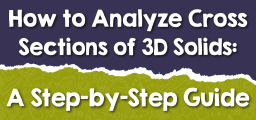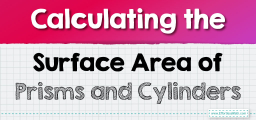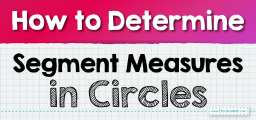Discovering the Magic of Triangle Midsegments
The allure of triangles doesn't end with just their angles. A significant and captivating concept within triangles is the "midsegment." As the name suggests, this segment links the midpoints of two sides of a triangle. But why is it so special? In this comprehensive guide, we'll demystify the properties and significance of the triangle midsegment and showcase its wonders with tangible examples.

Step-by-step Guide: Triangle Midsegment
1. Definition of a Midsegment:
A midsegment of a triangle is a segment that connects the midpoints of two sides of the triangle. Essentially, every triangle has three possible midsegments, one for each pair of sides.
2. Properties of the Midsegment:
- It is parallel to the third side of the triangle (the side it doesn’t touch).
- Its length is half the length of the third side of the triangle.
Formula:
Given a triangle with sides \(a\), \(b\), and \(c\), if the midsegment connects the midpoints of sides \(a\) and \(b\), then:
Length of the midsegment \( = \frac{c}{2} \)
3. Derivation of the Properties:
The properties of the midsegment can be derived using the properties of parallel lines and triangles. For instance, using alternate interior angles and the properties of a transversal cutting parallel lines, one can show that the segment is parallel to the third side. Similarly, using similar triangles, one can deduce the length property of the midsegment.
Examples
Example 1:
Given a triangle \(ABC\) with side \(AB = 8 \text { cm}\), side \(BC = 10 \text { cm}\), and side \(AC = 6 \text { cm}\). Find the length of the midsegment connecting the midpoints of sides \(AB\) and \(AC\).
Solution:
The midsegment is parallel to side \(BC\) and its length is half of \(BC\).
\( \text{Length of the midsegment} = \frac{BC}{2} = \frac{10 \text{ cm}}{2} = 5 \text{ cm} \)
Example 2:
Triangle \(DEF \) has a midsegment \(GH \) that measures \(7 \text{ cm} \) in length. If \(GH \) connects the midpoints of sides \(DE \) and \(EF \), determine the length of side \(DF \).
Solution:
Since the midsegment is half the length of the third side:
\( DF = 2 \times GH = 2 \times 7 \text{ cm} = 14 \text{ cm} \)
Practice Questions:
- Triangle \( JKL \) has sides \(JL = 12 \text{ cm} \), \(JK = 9 \text{ cm} \), and \(KL = 15 \text{ cm} \). Determine the length of the midsegment connecting the midpoints of sides \(JL \) and \(KL \).
- If the midsegment of triangle \(MNO \) is \(11 \text{ cm} \), and it connects the midpoints of sides \(MN \) and \(NO \), find the length of side \(MO \).

Answers:
- The midsegment parallel to \(JK \) will have a length of \( \frac{15}{2} = 7.5 \text{ cm} \).
- \(MO \) will be \( 2 \times 11 = 22 \text{ cm} \).
Related to This Article
More math articles
- Top 10 Math Books for Grade 6 Students: Inspiring Masterminds
- The Ultimate 6th Grade NSCAS Math Course (+FREE Worksheets)
- How To Create a Distraction-Free Study Environment: 10 Tips
- The Ultimate 7th Grade NYSTP Math Course (+FREE Worksheets)
- What Happens If You Fail the STAAR Test in High School?
- 6th Grade OST Math FREE Sample Practice Questions
- The Ultimate MCAS Algebra 1 Course (+FREE Worksheets)
- How to Write Equations of Horizontal and Vertical Lines
- FREE 3rd Grade NYSE Math Practice Test
- Reciprocal Identities

























What people say about "Discovering the Magic of Triangle Midsegments - Effortless Math: We Help Students Learn to LOVE Mathematics"?
No one replied yet.